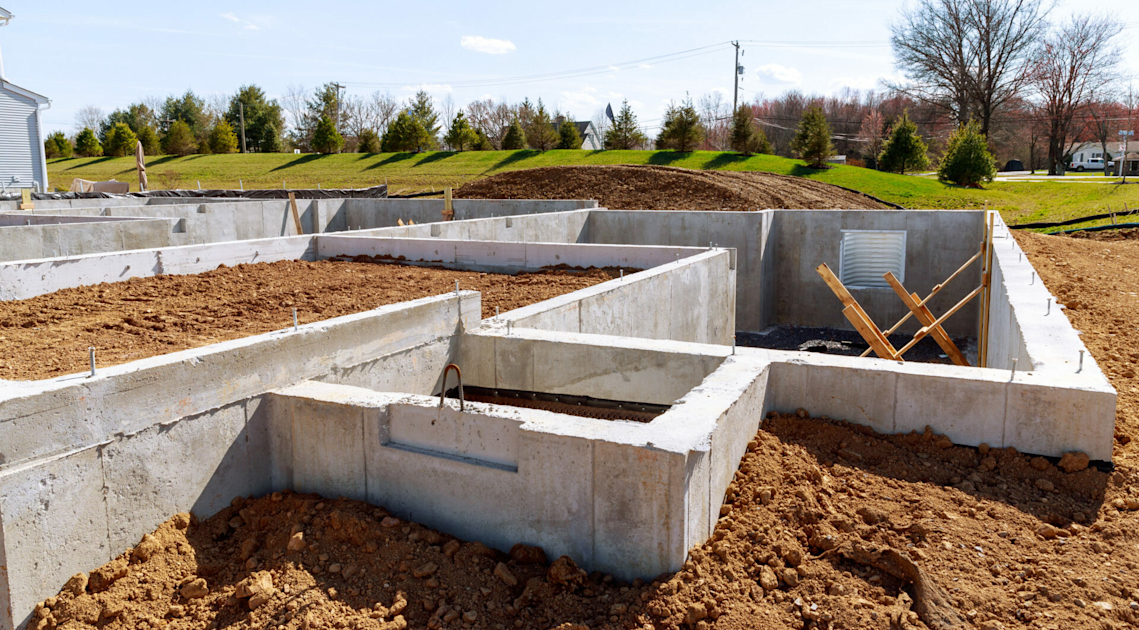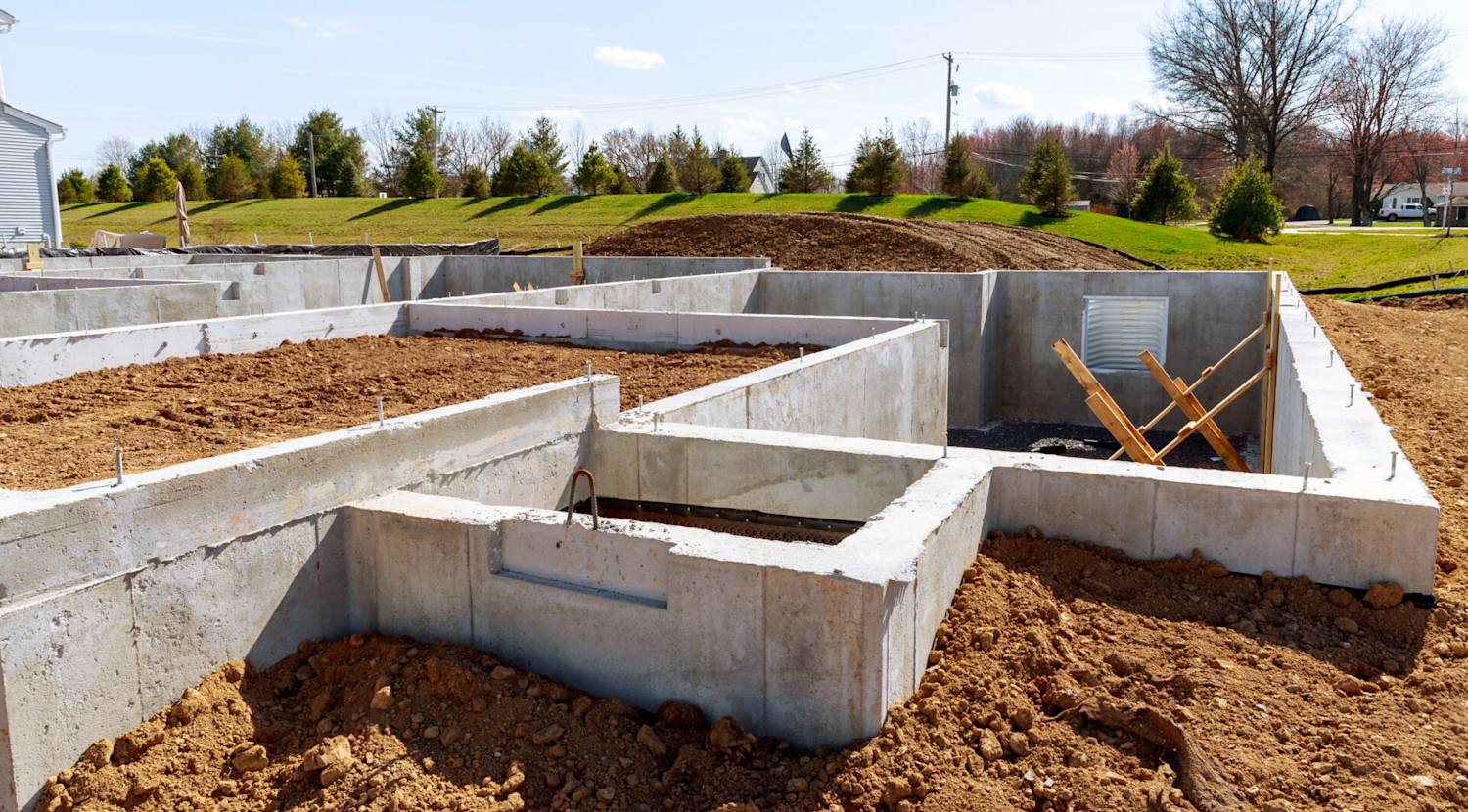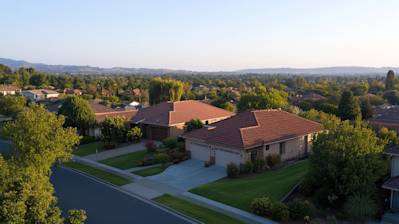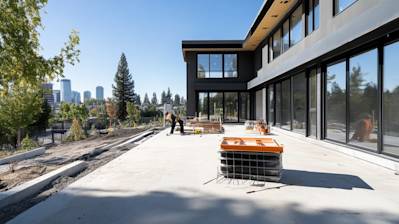Every structure needs a firm and secure foundation, and in the world of construction, nothing matches the strength and resilience of a concrete foundation. Valued for its long lifespan, astonishing durability, cost-effectiveness and adaptability to various design needs and environmental conditions, it stands as the fundamental backbone of all structures. This detailed blog post will take you through what you need to know about concrete foundations, their types, construction process, and other related topics, providing a thorough insight into this crucial aspect of construction.
Understanding the Concept of Concrete Foundation
A concrete foundation refers to the lowermost part of the structure, usually located below the ground level, which transfers the load of the structure to the earth. The key purpose of this foundation is to distribute the weight of the structure across a large area, thus ensuring the structure's stability against environmental and human-induced changes. Concrete, owing to the immense strength and ruggedness it offers, becomes an ideal choice for building foundations.
Types of Concrete Foundations
Depending upon the requirements of a structure, its construction site's geological conditions, and various other factors, different types of concrete foundations may be chosen. Here are some broadly used types:
- Poured Concrete Foundations: These are the most common types known for their high strength and durability. The construction involves pouring concrete into foundation forms and allowing it to harden.
- Concrete Block Foundations: Also known as masonry foundations, these are constructed by stacking concrete blocks. They are quick to build and provide excellent resistance against pressure.
- Slab Foundations: These are single, thick slabs of concrete, extended directly on the ground. Commonly used in warm climates, they are economical and require little maintenance.
Steps in Building a Concrete Foundation
The procedure to build a concrete foundation is systematic and comprises several steps, each having its own significance in ensuring the end product's quality and durability. Here are the key steps involved:
Soil Testing
Before starting the construction, it's crucial to test the soil to know its type, compactness, water table level, etc. These factors are important for deciding upon the type of foundation and other construction specifics.
Site Excavation
Based on the foundation design, the site is then excavated, creating space for laying the foundation. The excavation is done considering the depth and width required for the foundation.
Formwork Installation
This involves creating a mold or framework using wooden or steel structures into which the concrete will be poured. The formwork defines the shape and size of the foundation.
Pouring of Concrete
The ready concrete mix is transferred into the formwork. The concrete is poured in layers, and each layer is compacted before pouring the next one to avoid any voids or spaces.
Curing
Once the concrete is poured, it is allowed to cure for a specific period, usually 27-30 days. During this time, the concrete hardens and gains strength. The curing process requires the concrete to be kept moist to ensure proper hardening.
Importance of Quality in Concrete Foundation
The quality of a concrete foundation plays a central role in determining the structure's safety, durability, and longevity that it supports. Whether it's selecting the right type of concrete with the appropriate strength or ensuring meticulous workmanship during the construction process, every detail matters. A well-constructed concrete foundation withstands the various forces working upon it, such as the structure's weight, soil pressure, seismic forces, and more, safeguarding the building against damages and risks.
Concrete foundations, as the underpinning of construction structures, hold immense importance in architecture and civil engineering. The successful execution of a concrete foundation translates into a structurally sound building that stands the test of time and environmental challenges. We hope this detailed blog about concrete foundations enriches your knowledge on this subject and helps your future building endeavours.
Frequently Asked Questions About Concrete Foundation
What are the Different Types of Concrete Foundation?
There are primarily three types of concrete foundations: slab-on-grade, crawlspace and basement. Slab-on-grade foundation is created by pouring concrete on a flat surface. Crawlspace is another type usually built slightly above ground level allowing space for crawl beneath the house. Basement foundation, on the other hand, is a type that's highly recommended in cold climates. It's more expensive, yet arguably the most beneficial of all foundation types.
Why is Concrete Used in Foundations?
Concrete is a common choice for foundations because of its strength, durability, versatility, and availability. It can bear heavy loads, resist compression, and can be molded into various shapes, making it ideal for creating solid and sturdy foundations for buildings of all types and sizes.
How Long Does a Concrete Foundation Last?
With proper maintenance and barring any extreme conditions, a concrete foundation can last for 100 years or more. Factors such as the quality of concrete mix, construction techniques, and environmental hazards could affect the lifespan of a concrete foundation.
How Thick Should a Concrete Foundation Be?
The thickness of a concrete foundation varies depending on the size and design of the building it is supporting. For residential homes, it typically ranges from 8 to 10 inches while commercial structures might require a thicker foundation. It's best to consult with a structural engineer or local building codes to determine the ideal thickness for your foundation.
Does Concrete Foundation Require Maintenance?
Though concrete is durable and long-lasting, it does require some level of maintenance to protect its integrity. This may include regular inspections for cracks, treating these cracks promptly, keeping the soil around the foundation properly drained, and ensuring that the concrete is adequately sealed against water and moisture.
What are the Signs of a Damaged Concrete Foundation?
You might suspect a damaged concrete foundation if you see signs like abnormal gaps around doorframes and windows, uneven or bouncing floors, cracked or crumbling walls, water leakage and dampness in the basement, and separation of exterior walls or roof from the foundation.
How to Repair a Cracked Concrete Foundation?
Small cracks in a concrete foundation can be repaired using hydraulic cement or polyurethane foam. However, large and structural cracks require professional intervention. It's paramount to determine the root cause of the crack before proceeding with any repair.
What is the Cost of a Concrete Foundation?
The cost of a concrete foundation depends on various factors, including the type and size of the foundation, soil conditions, reinforcements used, and geographical location. To get an accurate estimate, it's best to get a quotation from a reputable contractor in your area.
Can a Concrete Foundation be Recycled?
Yes, a concrete foundation can be recycled. Old and broken concrete can be crushed into aggregates and used in a variety of construction activities, reducing landfill waste and conserving natural resources.
How is a Concrete Foundation Built?
Building a concrete foundation involves multiple stages: site excavation, formwork installation, reinforcement placement, concrete pouring, and curing. Each stage requires precision and expertise to ensure the foundation's strength and durability.
What is the Future of Concrete Foundations?
The future of concrete foundations looks promising with the advent of new technologies and materials. More environmentally-friendly types of concrete, such as green concrete and high-performance concrete, are likely to become more mainstream. Also, advancements in construction techniques and software are expected to improve the efficiency and accuracy of foundation construction.
Pros of Concrete Foundation
Durability
A concrete foundation provides superior durability and longevity. Concrete is renowned for its strength and resilience, and it can easily withstand the test of time and the elements. This particular type of foundation is highly resistant to rot and decay, unlike wooden foundations. In fact, if properly maintained, a concrete foundation can last as long as the building stands.
Protection Against Pests
Another significant advantage of a concrete foundation is its virtually impenetrable barrier against pests. Termites, rodents and other critters find it incredibly challenging to breach concrete foundations, thereby eliminating potential damage and costly repairs down the line.
Fire Resistance
Concrete doesn't burn. Thus, a concrete foundation can provide an extra layer of fire protection to your building. This is one of the reasons why concrete foundations are the go-to choice for commercial properties and fire-prone areas.
Increased Property Value
Implementing a concrete foundation can significantly enhance your property’s value. Most prospective buyers and real estate professionals appreciate the durability and practicality of concrete foundations. They are seen as an investment that promises safety and reduced maintenance costs, consequently making any property significantly more attractive.
Cons of Concrete Foundation
High Upfront Cost
Despite its many benefits, a major drawback of a concrete foundation is the upfront cost. Mixing and pouring concrete, reinforcement, and labor costs can all add up quickly. Compared to other foundation types like a wooden or gravel foundation, concrete may come across as an expensive option.
Time-Consuming Installation
The procedure of installing a concrete foundation is a long and complex one. It involves excavating, creating a wooden frame, pouring the concrete, allowing it to set, and finally removing the frame. This means that a considerable amount of time must be factored in when considering a concrete foundation.
Difficult to Install Utilities
Another disadvantage of a concrete slab foundation is that installing utilities can be a complex process. Pipes and cables must be laid out prior to pouring the concrete, as updating or retrofitting utilities later can be a complicated and costly process.
Lack of Insulation
While concrete is a superb structural material, it does not provide a good insulation. If you live in an area with extreme temperatures, you may need to consider additional insulation methods such as insulation foam or blankets to complement your concrete foundation.
Cracking Over Time
Despite its durability, one common problem with a concrete foundation is that it can develop cracks over time, especially if the ground beneath it shifts or settles. These cracks may allow water to seep in, causing possible damage and complicating the issue further. Repairs can be timely and expensive. For more information on repair options, you can visit Lowe's.
Conclusion
The choice to use a concrete foundation brings many considerations. It's critical to weigh all pros, such as durability, resistance to fire and pests, and increased property value, and cons like high upfront cost, time-consuming installation, and a lack of insulation. Always consider geographical location, ground stability, budget and long-term property goals when selecting a foundation for any structure.
Summary
The stability that a concrete foundation offers is unbeatable. This provides a solid base, anchoring the whole structure in place and supplying protection against shifts in the earth. Concrete foundation sets the tone for a safe and secure home for the occupants.
A concrete foundation also reduces maintenance works and expenses in the long run. Although initially, it might feel expensive, considering its durability and minimal upkeep, the expense is justified. This sturdy foundation saves homeowners from constant repairs and issues that could arise from a weak or poorly installed foundation.
When we're talking about sustainability, a concrete foundation isn't far behind. It's environmentally friendly as concrete is made from abundant natural resources. And, the foundation's long lifespan means fewer resources spent on replacements. The benefits efficiently outweigh the initial energy usage and cost. So, a concrete foundation is a wise ecological choice.
About HouseIdea
Welcome to HouseIdea, based in the lively city of Sacramento, CA. We're your friends in home innovation, dedicated to bringing your housing dreams to life. Our team of skilled professionals utilize their vast experience coupled with the latest technology to deliver concepts that truly turn your house into a home. We're more than just a company - we're a community of imaginative thinkers who believe in creating functional, stylish, and sustainable living spaces. So why wait? Let HouseIdea transform your vision into reality. We're excited to work with you!
Tags: concrete foundation, foundation construction, building materials,



















